- Bernard Preston homepage
- Starch
- Simple Vs Complex Carbohydrate
Simple vs complex carbohydrate
The distinction between simple vs complex carbohydrate is important; it affects how these food substances are absorbed and digested. Furthermore, understanding the difference means you are far less likely to become obese or suffer from type-2 diabetes.
Chronically raised blood glucose is a major factor in the most prevalent diseases; cardiovascular conditions and metastatic tumours.
As a rule of thumb simple carbs are more rapidly absorbed causing a surge in blood glucose and insulin but there are strange exceptions to the rule; like natural unprocessed honey. It all has to do with the fibre-content, fat and protein in the meal; and other micronutrients.
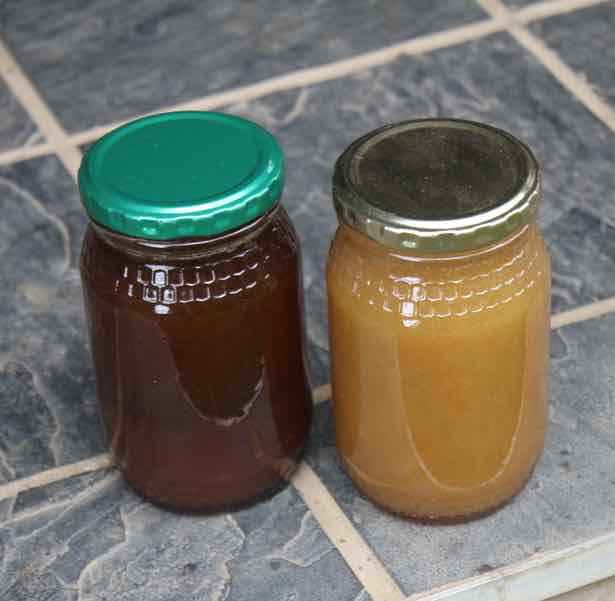
Raw honey has a borderline low GI of 55 but white-rice, commercial bread and potatoes from cold storage are all very high.
White rice has an even higher glycemic-index than sugar; so does commercial honey.
But brown rice, artisan sourdough bread and new potatoes are all quite different; it's a very complex subject. Failing to grasp it is why there is a diabetic pandemic the world over; coupled with the virus makes it a killer.
Many complex carbohydrates, particularly those that have been refined, may also cause a blood sugar surge; but others pass through to the colon where they are fermented to form good short-chain fatty acids like butyrate, producing no insulin rush.
Some understanding of these difficult concepts of simple vs complex carbohydrate can transform your well-being.
This page was last updated by Dr Bernard Preston on 9th April, 2023.
Simple carbohydrates
There are two types of simple carbohydrates; those that are made up of single sugar molecules, known as monosaccharides.
And others where two single sugar molecules like glucose, for example, combine to form disaccharides.
There are many monosaccharides, single sugars; and some you will be familiar with.
- Glucose is a mono found for example in honey.
- Fructose is another making fruit sweet.
- Galactose is a monosaccharide found in sugar beets, avocados and many other foods.
These single sugar molecules are the simplest form of starch. How quickly they are absorbed from our food into the blood stream is measured by the glycemic index.
The GI of glucose is defined as 100, meaning it's very rapidly absorbed.
On the other hand fructose, the fruit sugar has a low GI of only 19.
However don't think that therefore high-fructose corn syrup is not so bad; it is dreadful.
So too the galactose in an avocado is very slowly absorbed because of the fat and protein in the fruit; it has a GI of only 15.
So simple carbohydrates are not bad; they are a ready source of energy but understanding them is vital.
There's a not uncommon misconception that all simple carbohydrates should be avoided because they are rapidly absorbed, giving a blood glucose rush; but all complex starches are slowly digested and are good. It is completely false.
Cake flour for example, a complex carbohydrate, has a high GI of 70; white rice is even more concerning at 75. Much depends on how refined the food is; what proportion of the fibre has been extracted?
Are you beginning to get a grasp of simple vs complex carbohydrates and how they can dramatically affect your well-being, for better or for worse?
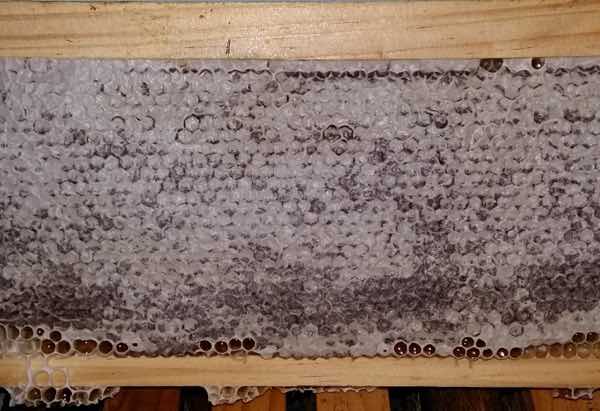 Fully capped honey comb.
Fully capped honey comb.Honey is a mixture largely of glucose and fructose.
It has a moderate GI of about 50 depending on how refined it is, the amount of pollen and the ratio of fructose to glucose. It varies considerably from one flower to another.
The greater the fructose fraction, the lower the glycemic index.
There are many disaccharides too; where two sugars combine together and again some will be familiar.
- Maltose, the sugar in beer, for example, is made up of two units of glucose. (GI 105)
* Glucose + glucose = maltose
- Common table sugar, known as sucrose consists of glucose and fructose molecules that have combined. (GI 65)
* Glucose + fructose = sucrose
- Lactose, the double sugar found in milk. (GI 45)
* Glucose + galactose = lactose
Generally the more refined the carbohydrate, as the fibre, protein and fatty acids are removed, the GI rises. And maltose is top of the pops; that's why beer is so fattening.
So it's time to move on in our discussion of simple vs complex carbohydrate to the starches.
Complex carbohydrates
Complex carbohydrates have long chains of sugar molecules; there are two types of starch.
- Amylose which has a helical structure that is more difficult for the enzymes to act on. An example would be pectin, the fibre found in many fruits which is resistant to digestion in the small intestine.
- Amylopectin which has many branches and is rapidly digested. An example would be the potato which has a high GI.
Retrogradation
Cooking and then cooling it overnight has a dramatic effect on the GI of a starch.
For example, if you cook enough oats porridge for several days, taken hot at the first breakfast it will have a high glycemic index; but cooled in the refrigerator and then enjoyed tomorrow, the starch goes through a process called retrogradation, lowering the GI. Even reheating will have little effect.
Refined oats however should be avoided at all costs; once the fibre has been removed it becomes a very high GI food. Does yours come in a box and are the flakes small? It is definitely not one of the good brain foods.
So the subject is complex; how you prepare a carbohydrate, how much of the fibre is refined out, the amount of fat and protein present all affect whether it will have a good influence on your body; or whether it shall make you obese and likely to become insulin resistant and eventually diabetic.
In fact the pumpkin family has been used for centuries in traditional medicine for the treatment of type-2 diabetes[4]; in small amounts keeping the glycemic load down.
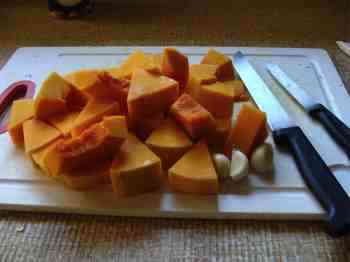
Complex carbohydrate which passes through the small intestine undigested, producing no blood glucose reaction, but reaching the colon is known as resistant starch.
In the colon it is fermented rather by the microbiota, a teaming myriad of friendly bacteria and yeasts, forming instead profoundly important short-chain fatty acids.
In other jargon, resistant starch is known as a prebiotic; food for the bugs.
These bugs can easily become depleted, especially after taking antibiotics, many of which are found in small quantities in our foods.
Taking a probiotic like kefir helps to replenish this normal flora that is so important for our well-being.
Prebiotic
A prebiotic is the fraction of the fibre in fruits, vegetables and grains that passes through the small intestine, reaching the colon where it is fermented instead by the microbiota[3].
These prebiotics are found in all whole foods like apples and broccoli; there is no need to get them from expensive supplements.
Probiotic
A probiotic consists of the living yeasts and bacteria, known as the microflora, essential friendly bugs that are found in the intestine; and other organs like the bladder too[6]. Take them in supplements if you must but better still and far cheaper, find them in these kefir benefits. It takes just a few minutes twice a week to prepare your own.
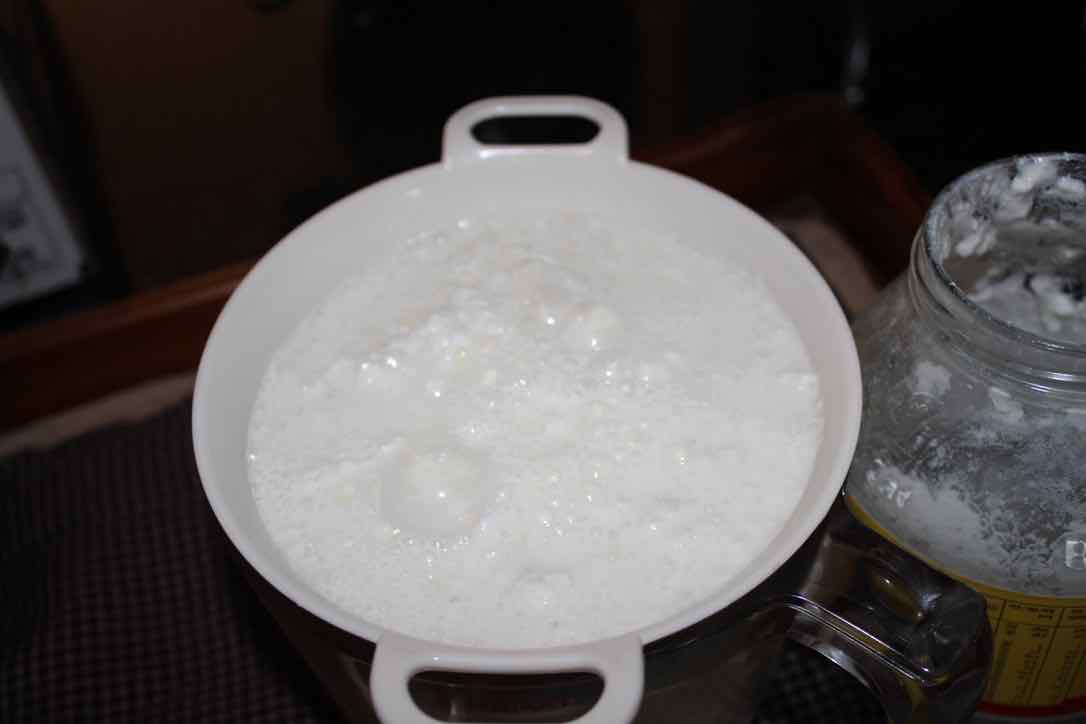
Simple vs complex carbohydrate
Simple vs complex carbohydrate is an important distinction to grasp.
Do not get caught in the trap, thinking that simple carbohydrate is all bad and must be avoided, but the complex variety is nutritious and can be enjoyed ad lib.
Milk and honey do contain simple sugars which, depending on how they are processed, may produce a small glycemic reaction.
White bread and polished rice consist of complex carbohydrate but have a very high glycemic effect; and a host of crackers, cookies and buns too. They make us fat. It really is a difficult subject.
In short look for unrefined foods, whether starches or not; the amount of fibre has a dramatic effect on how quickly the sugars are absorbed into the blood stream[5].
The 100% wholemeal bread below with added protein and good fat is an example of a low-glycemic complex carbohydrate.
That protein comes from the excess curds produced by our homemade kefir and hummus that we process every week. The added fat is from coconut butter; and I'm going to be experimenting with avocado in the dough to see if it further lowers the GI.
100% wholemeal flour is almost impossible to purchase because it goes rancid. Our solution was to purchase a wheat grinder; they are expensive but then the flour costs only R4 per kilogram (13¢ per pound).
In 2023 that price of home-milled flour has risen to R5.80 per kg.
If you bake your own bread then it's certainly cost-effective; more important is the immediate access to true wholegrain flour.
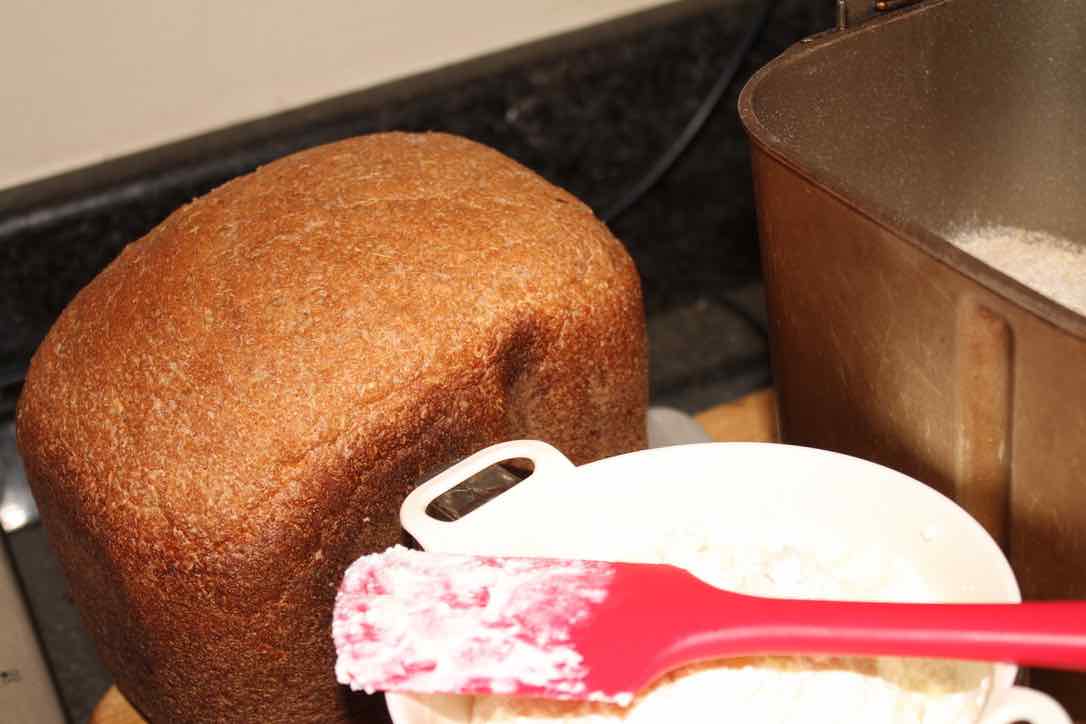
Taking a walk immediately after a starchy meal also has a dramatic influence on reducing the glucose rush. Snacking on a candy bar or cola whilst at a computer or in front of the TV is asking for trouble.
Finally to sum up, this difficult subject of simple vs complex carbohydrate is all about how the starch is prepared, refined and the context of the whole meal.
Prediabetes
Almost one half of adult folk enjoying the modern "industrial diet" have dangerously raised blood-glucose. This makes them vulnerable to many serious diseases including adult-onset blindness, stroke and Covid, of course. It is no coincidence that over half of those dying from the virus are obese or diabetic.
How to test for prediabetes in the home-setting is actually not difficult if you know someone with a glucometer; two pricks of the finger will do it.
The buzzword even in mainline healthcare is to use food as medicine; type-two diabetes for example can be completely brought into remission without the use of drugs.
Some useful links
- Why does honey crystallise - all about the ratio of fructose to glucose.
- Kefir sourdough bread - bake it yourself.
- Microbial Degradation of Whole-Grain Complex Carbohydrates and Impact on Short-Chain Fatty Acids
- Food as medicine
- What is dietary fiber?
- The role of probiotics in women with recurrent urinatry tract infections
When browsing use right click and Open Link in New Tab, or you may get a bad gateway signal.
Newsletter
Our newsletter is entitled "create a cyan zone" at your home, preserving both yourself and Mother Earth for future generations; and the family too, of course. We promise not to spam you with daily emails promoting various products. You may get an occasional nudge to buy one of my books.
Here are the back issues.
- Lifestyle and ideal body weight
- What are ultra-processed foods?
- Investing in long-term health
- Diseases from plastic exposure
- Intensive lifestyle management for obesity has limited value
- A world largely devoid of Parkinson's Disease
- The impact of friendly bacteria in the tum on the prevention of cancer
- There's a hole in the bucket
- Everyone is talking about weight loss drugs
- Pull the sweet tooth
- If you suffer from heartburn plant a susu
- Refined maize meal and stunting
- Should agriculture and industry get priority for water and electricity?
- Nature is calling
- Mill your own flour
- Bake your own sourdough bread
- Microplastics from our water
- Alternative types of water storage
- Wear your clothes out
- Comfort foods
- Create a bee-friendly environment
- Go to bed slightly hungry
- Keep bees
- Blue zone folk are religious
- Reduce plastic waste
- Family is important
- What can go in compost?
- Grow broad beans for longevity
- Harvest and store sunshine
- Blue zone exercise
- Harvest and store your rainwater
- Create a cyan zone at your home
Did you find this page interesting? How about forwarding it to a friendly book or food junkie? Better still, a social media tick would help.
- Bernard Preston homepage
- Starch
- Simple Vs Complex Carbohydrate
Address:
56 Groenekloof Rd,
Hilton, KZN
South Africa
Website:
https://www.bernard-preston.com